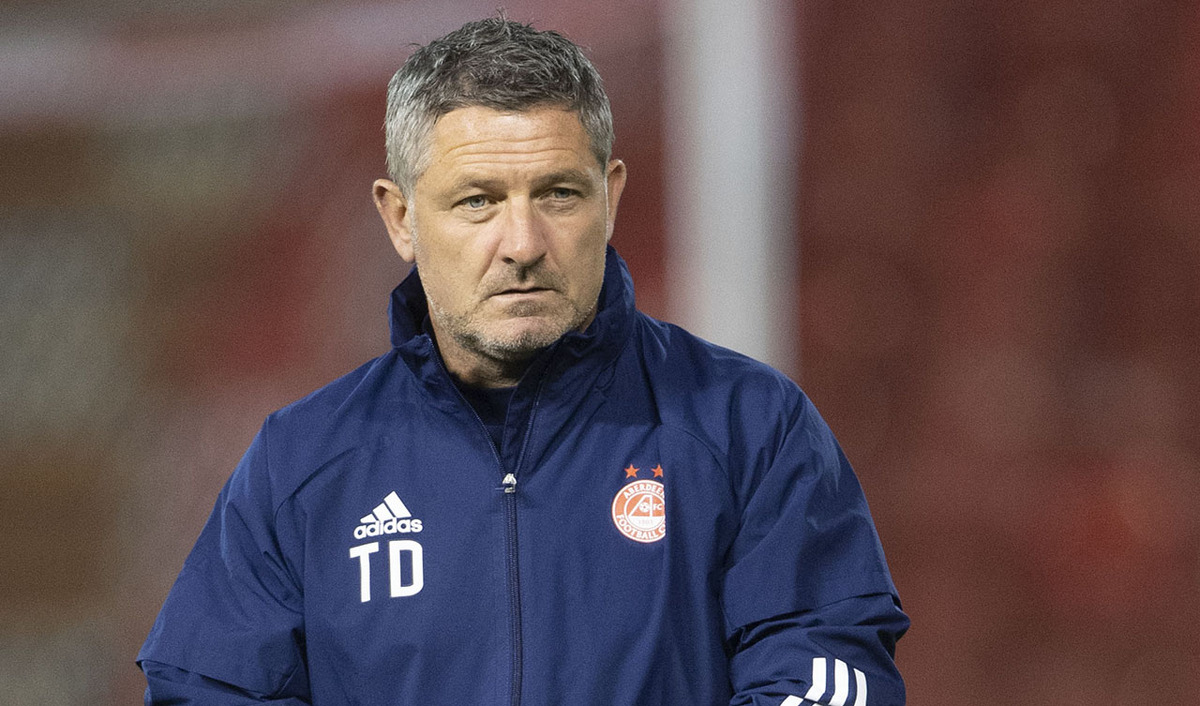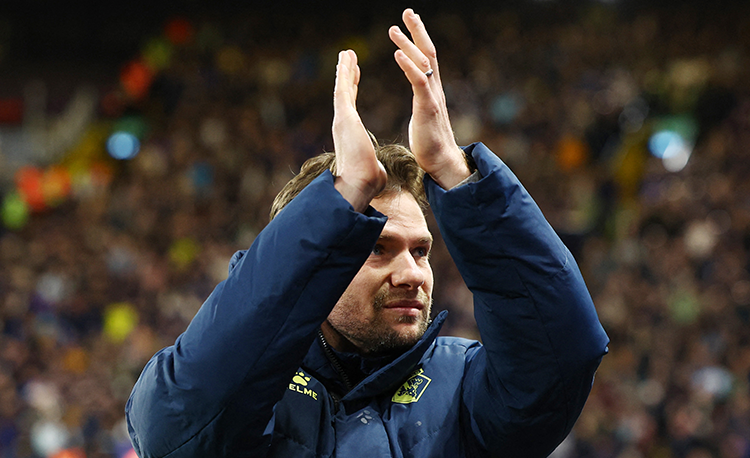You are viewing 1 of your 1 free articles
Channel, press and counter
| Area | Three quarters of pitch |
| Equipment | Balls, bibs, cones, 2 small goals, 1 full size goal |
| No. of Players | 13 players +1 goalkeeper |
| Session Time | 30 mins |
This session is designed to prepare the team to channel opponents into an area where we have an advantage or an overload, then intensely press to win possession and quickly launch a counter-attack.
It’s a session that I would run on a weekly basis with the team as it gives players a clear understanding of everything they need to channel as a team, press as a team and counter-attack as a team. It also helps to give the team its identity as a pressing team who can counter-attack at a really high intensity.
The session progresses as the players develop an understanding of each component part of the session and grasp that the channel leads to the press, which in turn leads to the counter-attack.
Before commencing this session, the players would be presented with a video analysis of the upcoming opponents. This video would usually illustrate key components that we would be looking to work on in the practical session and the reasons for doing it.
“It’s a session that gives the players a clear understanding of everything they need to channel as a team, press as a team and counter-attack as a team”
COUNTER-ATTACKING GAME
We set up on three quarters of a pitch with a goal and a goalkeeper at one end and two small target goals at the other end. We mark a midfield box around the centre circle, as shown, and mark a box on each flank for the possession team’s full backs.
We’re using 13 outfield players split into a red possession team of seven and a blue counter-attacking team of six. The reds have two centre backs and two full backs. The full backs are locked in boxes on each wing. The counter-attacking blue team has a front three ready to attack and the remaining three players from each team start in a 3v3 in the midfield box.
Play begins with the goalkeeper, who passes out to a red centre back. The defender receives the ball and must try to build play from the back by passing the ball into the midfield box, where the red midfielders have to try to string four consecutive passes together.
While the reds must pass the ball in the midfield box, the aim for the blue counter-attacking team is to win the ball back with an interception and then break forward quickly by passing the ball into one of the attackers in the blue front three, as shown [1a].
[1a]
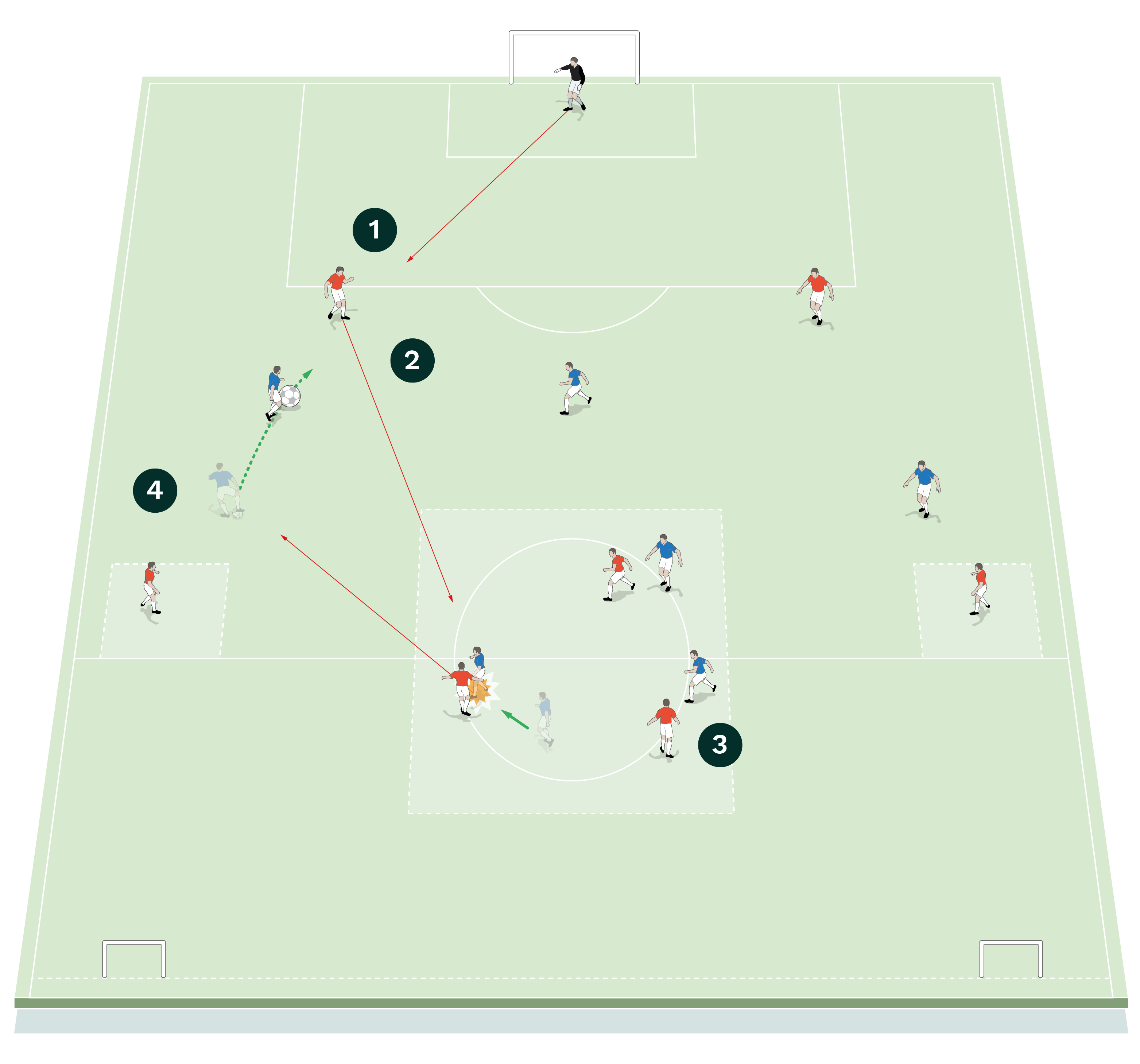
2. The red centre back receives from the keeper and must build play from the back by passing into the midfield box
3. It’s 3v3 in the midfield box. The red midfielders must try to string four consecutive passes together while the blue midfielders attempt to win possession
4. If the blue midfielders win possession in the midfield box, they break forward quickly by passing to one of the attackers in the blue front three
As soon as a blue attacker receives the forward pass, it becomes a 3v2 situation and the blues must try to score a goal, as shown [1b].
[1b]
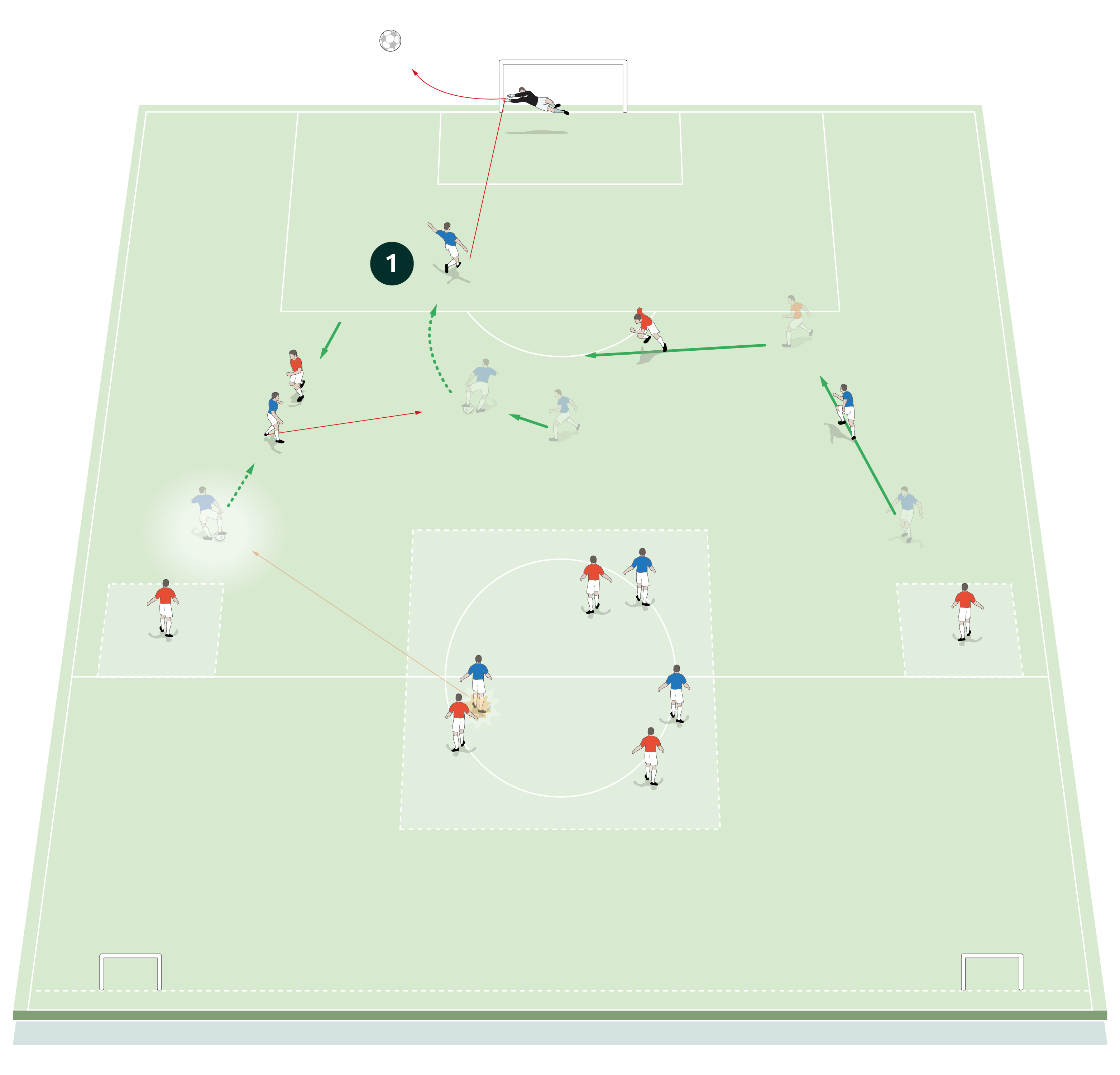
“The blue front three must ensure that they press to direct play into the midfield box by preventing passing options to the red full backs”
[1c]
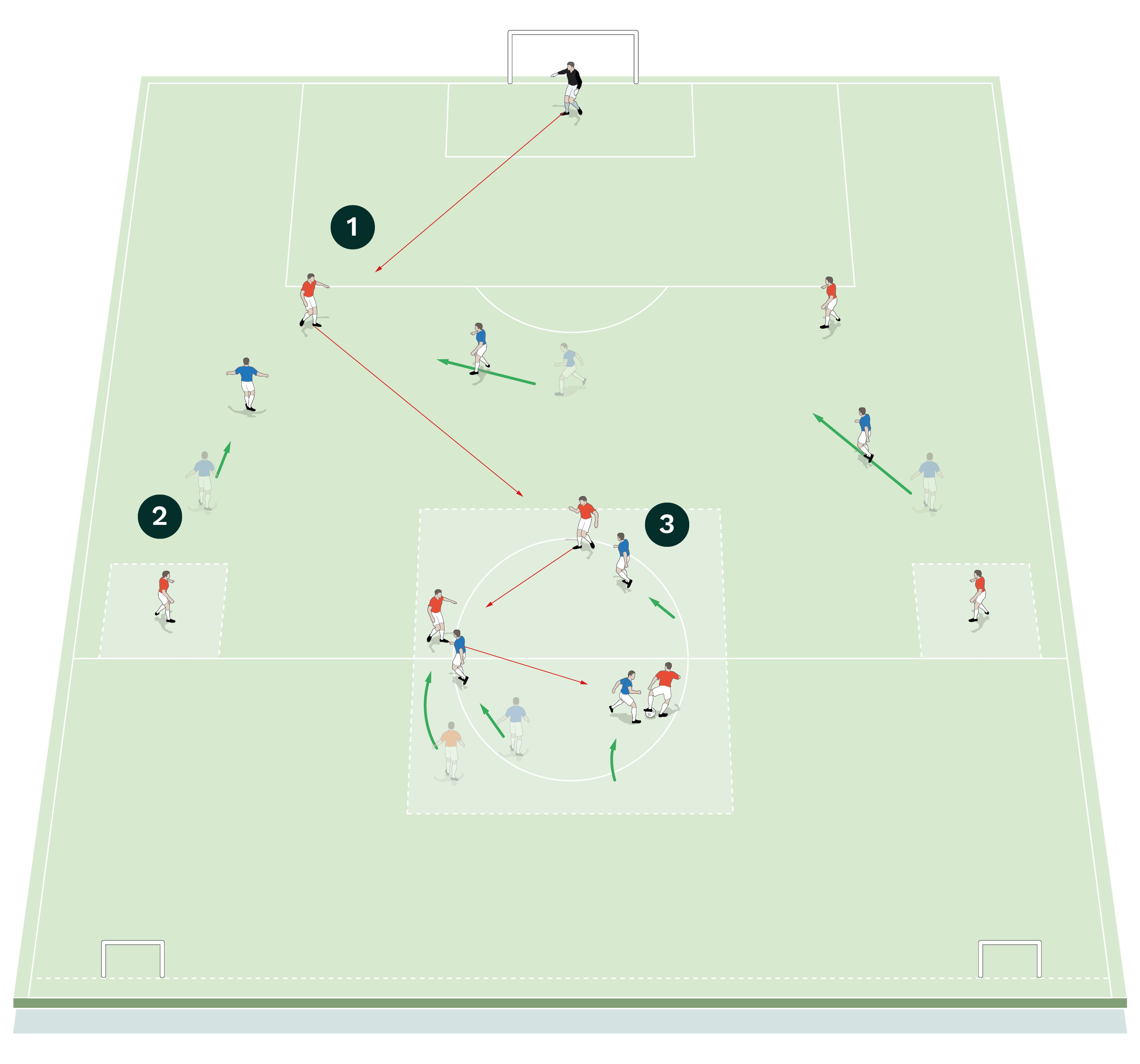
2. The blue front three must press to direct play into the midfield box by preventing options for the reds to pass to one of the full backs
3. Once the ball goes into the midfield box, the blues must press aggressively as a team and try to win possession
If a goal is scored, or if the ball goes out of play, the practice restarts with a ball from the goalkeeper, who once again passes out to a red centre back. The blue front three must ensure that they direct play into the midfield box by preventing options for the opposition centre back to play out wide to a red full back. Once the ball goes into the midfield box, the reds must pass the ball again in a 3v3 situation and the blues press to win possession, as shown [1c].
If the red team succeed in making four consecutive passes, then they must try to pass the ball out wide to one of their two advanced full backs who are positioned in a box each on the wing. Once the red full back receives the ball, the aim is to finish by passing the ball into a small target goal that is positioned at the end of the practice area, as shown [1d].
To progress the practice, once the blues have won the ball back in the midfield box, they should still pass forwards into the front three, but now we allow one blue midfield player to break out of the midfield box to join the attack as quickly as possible, creating a 4v2 counter-attack.
To progress the practice further, we allow both red full backs to make recovery runs to help defend the counter-attack alongside the two centre backs, making it a 4v4 situation, as shown [1e].
[1d]
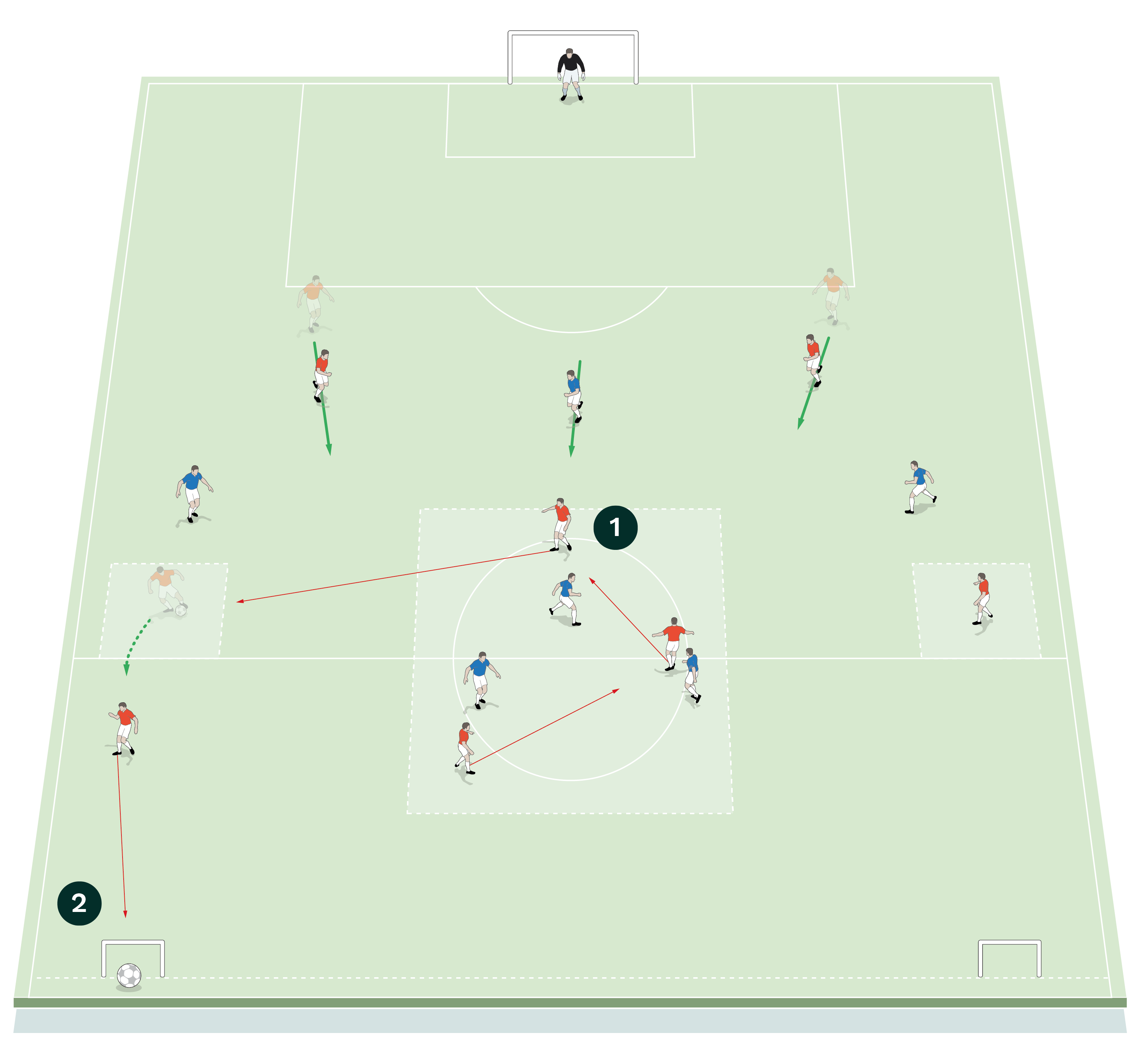
2. The red full back must finish by passing the ball into one of the small target goals
[1e]

2. To progress the practice further allow both red full backs to make recovery runs to help defend the counter-attack, making it 4v4
COACHING POINTS
What are the key things to look for?
This activity allows the counter-attacking team to channel opponents into an area where the team is prepared to win possession and break on defenders whose organisation is disrupted. It allows for coaching of ball-winning in midfield, making a quick first pass forward, supporting runs and clinical finishing.
We want to see players working as a team to channel the opposition into areas where there is an overload or where the pressing team is able to win the ball. This will allow players to press as a team and gain possession. Once in possession, the pace of the counter-attack and attacking runs are of paramount importance.
What are the typical mistakes players might make and how do I avoid them?
A typical mistake players make is take up poor positioning in relation to the rest of the team. We can correct this by ensuring that players are all on the same page and understand what is required of them.
Related Files
Editor's Picks
Deep runs in the final third
Using the goalkeeper in build-up play
Pressing principles
Intensive boxes drill with goals
Penetrating the final third
Creating and finishing
My philosophy
Pressing initiation
Compact team movement
Coaches' Testimonials

Alan Pardew

Arsène Wenger

Brendan Rodgers

Carlos Carvalhal

José Mourinho

Jürgen Klopp

Pep Guardiola

Roy Hodgson

Sir Alex Ferguson

Steven Gerrard
Coaches' Testimonials

Gerald Kearney, Downtown Las Vegas Soccer Club

Paul Butler, Florida, USA

Rick Shields, Springboro, USA

Tony Green, Pierrefonds Titans, Quebec, Canada
Join the world's leading coaches and managers and discover for yourself one of the best kept secrets in coaching. No other training tool on the planet is written or read by the calibre of names you’ll find in Elite Soccer.
In a recent survey 92% of subscribers said Elite Soccer makes them more confident, 89% said it makes them a more effective coach and 91% said it makes them more inspired.
Get Monthly Inspiration
All the latest techniques and approaches
Since 2010 Elite Soccer has given subscribers exclusive insight into the training ground practices of the world’s best coaches. Published in partnership with the League Managers Association we have unparalleled access to the leading lights in the English leagues, as well as a host of international managers.
Elite Soccer exclusively features sessions written by the coaches themselves. There are no observed sessions and no sessions “in the style of”, just first-hand advice delivered direct to you from the coach.
